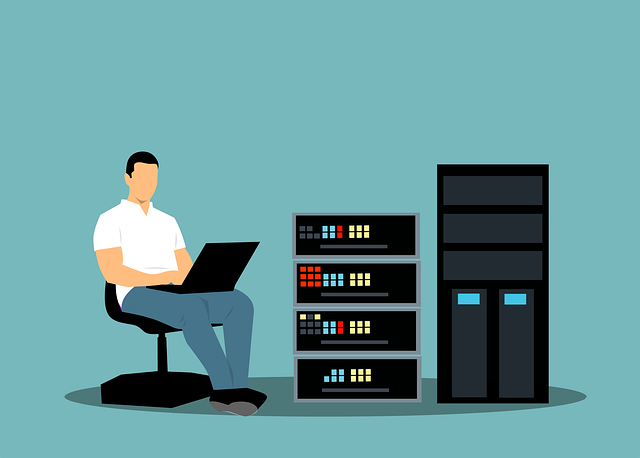Introduction to IoT Sensors – 10 Types of Sensors Used in IoT
Do you know about IoT sensors and types of IoT sensors? In this post, we have added everything from IoT to sensors in brief also added 10 types of sensors used in IoT.
Internet of Things (IoT) has revolutionized the world with its advanced technology that helps in bringing new innovation to applications in home automation and many related fields.
IoT Sensors are used as the main component in the designing of such smart devices that help in gaining quicker and ubiquitous access to resources.
As sensors in IoT play a pivotal role in reaching new levels of research and implementation, it is crucial to have relevant knowledge about these small yet useful devices in IoT.
IoT Sensors are the devices that are used to detect and then, respond to electrical or optical signals. It is a device that converts a physical parameter (such as humidity, speed, temperature, blood pressure, etc.) into an electrical signal that can be easily measured.
There is a complete list of sensors that are used to perform this sophisticated task. These sensors perform their job in a perfect way to help the device become smart and solve many of the existing problems that are faced by the people.
Given below is a full IoT sensor list that contains all the information about their functioning and the further types that are being used to develop smart devices in an effective way.
Table of Contents
Types of IoT Sensors
Here is a list of types of sensors used in IoT.

Humidity sensors
The type of sensor which is used to measure the humidity or the amount of water vapor in the atmosphere is commonly known as the Humidity sensor.
These are the sensors that mainly use temperature sensors to complete many manufacturing processes that require perfect working conditions.
They mainly are found in useful applications in residential & industrial domains namely in ventilating, heating, and air conditioning control systems owing to their fast detection of any change that occurs in humidity.
These sensors are commonly used in meteorology stations, hospitals, Automotive, Paint and coatings industries, etc.
IR sensors
The sensors used for sensing some specific characteristics of their surroundings by either emitting or detecting infrared radiation are known as infrared sensors.
This type of sensor finds its applications in includes Automotive blind-angle detection, Healthcare, Home appliances & remote control, wearable electronics, Breath analysis, Infrared vision, optical communication, etc.
This sensor type is a widely used sensor to monitor blood flow and pressure to ensure the rise of smart devices with all these features.
Image sensors
The sensor type that is used to convert optical images into electronic signals for displaying or storing files electronically is known as image sensors.
In this, two types of IoT sensors are used mainly, Charge-Coupled Device (CCD) and Complementary Metal-Oxide Semiconductor (CMOS) that have some degree of sensitivity to light and no difference in quality.
The best use of an image sensor is based on thermal imaging devices digital cameras & modules, radar, sonar, medical imaging and night vision equipment, Biometric & IRIS devices, as well as a media house.
These are used as IoT sensors for collecting data about different customers and helping businesses get a better insight into the number of visitors to their store.
Smoke sensor
The sensor used in IoT devices to sense smoke or airborne particulates is commonly called the smoke sensor. These sensors have come into use since the trend of growth in IoT devices has been explored.
These sensors have applications in many domains like buildings and accommodation infra, manufacturing industry, HVAC, etc. to mainly safeguard the people working in such hazardous areas.
Two main types of IoT sensors in smoke detection are the Ionization smoke sensors and Optical smoke sensors.
Proximity sensors
These IoT sensors are beneficial devices that detect the presence or absence of a nearby object and then, convert them into an electrical signal that is easily understandable by the users.
These are found to be quite useful in detecting the motion as well as the correlation between the customer and products which makes them play a key role in the retail industry.
Some of its types are Inductive Sensors (used for non-contact detection and are robust), Photoelectric Sensors (comprise of light-sensitive parts and used for long-distance sensing), Ultrasonic Sensors (measure the distance of targets, used in harsh conditions), and Capacitive Sensors (detect both metallic and non-metallic targets, used in complex applications).
Temperature sensors
The temperature sensor is a type of sensor that helps in measuring the heat energy which detects any physical change in temperature and then, converts the data obtained in terms readable to a device or user.
They are generally used in refrigerators, A/C control, and other devices, however, now they are also used in agriculture, manufacturing, and the healthcare industry.
Some main sub-categories of these sensors include Thermocouples, Thermistors, Resistor temperature detectors (RTD) and infrared sensors, etc. Learn more here.
Optical sensors
The sensors that measure the number of light rays and then, convert it into necessary electrical signals that can be read by users or instruments are known as optical sensors.
These sensors find a useful application in monitoring electromagnetic energy, such as light, electricity, etc., and have been used in different domains like oil companies, pharmaceutical companies, aerospace, healthcare, etc.
The different types of IoT sensors under optical sensors are Proximity & Infrared sensors, Fiber Optics sensors, Photodetector, and pyrometers.
Motion detection sensors
The electronic device that detects the physical movement in an area that helps in transforming motion into an electric signal is called a motion detection sensor.
These sensors play a pivotal role in Automatic parking systems, Smart Cameras, Automated sinks/toilet flushers, intrusion detection systems, Boom Barriers, Automatics door control, Toll plaza, Hand dryers, energy management systems, etc.
These sensors are used in manufacturing IoT devices and have several types of sensors such as Ultrasonic sensors, Microwave sensors, Passive Infrared sensors that have applications in security management systems and are helpful in creating smart devices in a simplified way.
Pressure sensor
The type of sensor used to sense pressure and then, convert it into different electric signals is known as a Pressure sensor. These sensors are valuable to manufacture IoT devices and systems that need the pressure to be measured.
The pressure can be maintained at a specific level as required by the device. Also, it offers easy to detect pressure drops and fluctuations in an organized manner.
Gas sensor
The gas sensors are synonymous with chemical sensors which are extensively used to monitor changes in the air quality and gases.
There are industries such as detecting toxic or combustible gases, agriculture and health sectors, Like chemical sensors, they are used in numerous industries such as manufacturing of paints, plastics, rubber, pharmaceutical & petrochemical, and used for air quality monitoring, chemical Laboratory research, Detection of toxic or combustible gas, Hazardous gas monitoring in coal mines, Oil & Gas industries, etc.
Also, Read – Unlocking the Potential of IoT Application Development for Your Business
Final Thoughts
Thus, it is important to note that sensors used in IoT are extremely vital and is the heart of the technology.
By using the right sensor types for your smart devices you can bring a revolution in the entire process of automation of several processes.
IoT sensors have the potential to reach impossible goals using smart technological devices.
By the use of these different types of IoT sensors, one can easily collect necessary data and maintain it for the development of a smart world around us, that will have a reliable solution for every problem you see.









